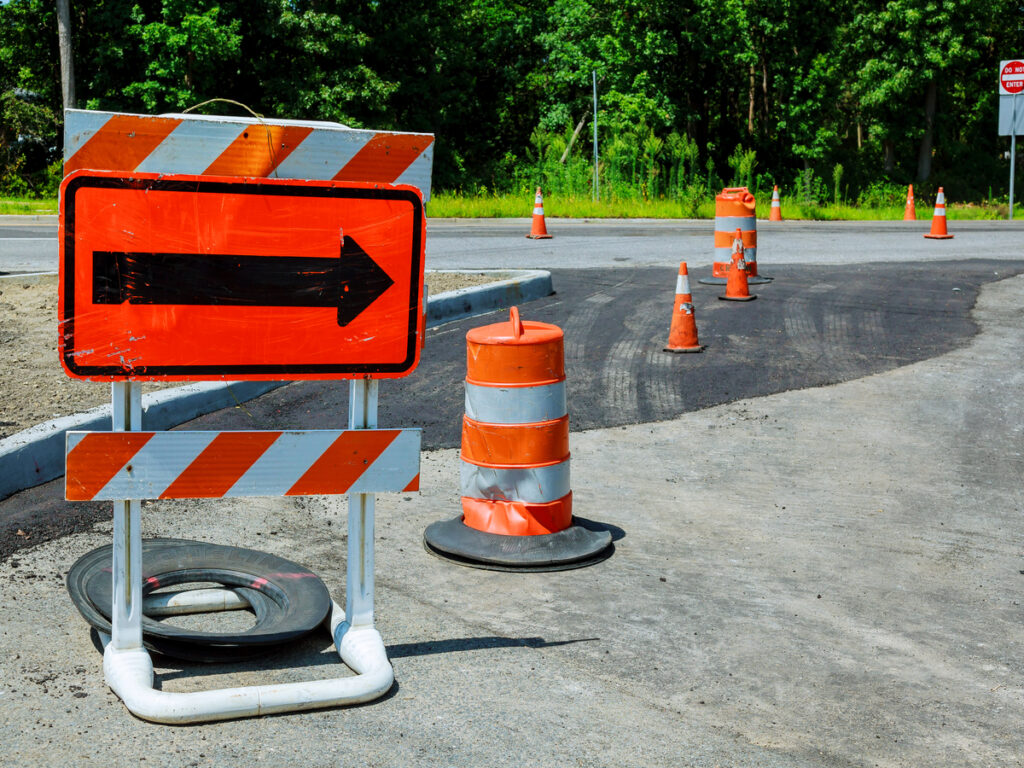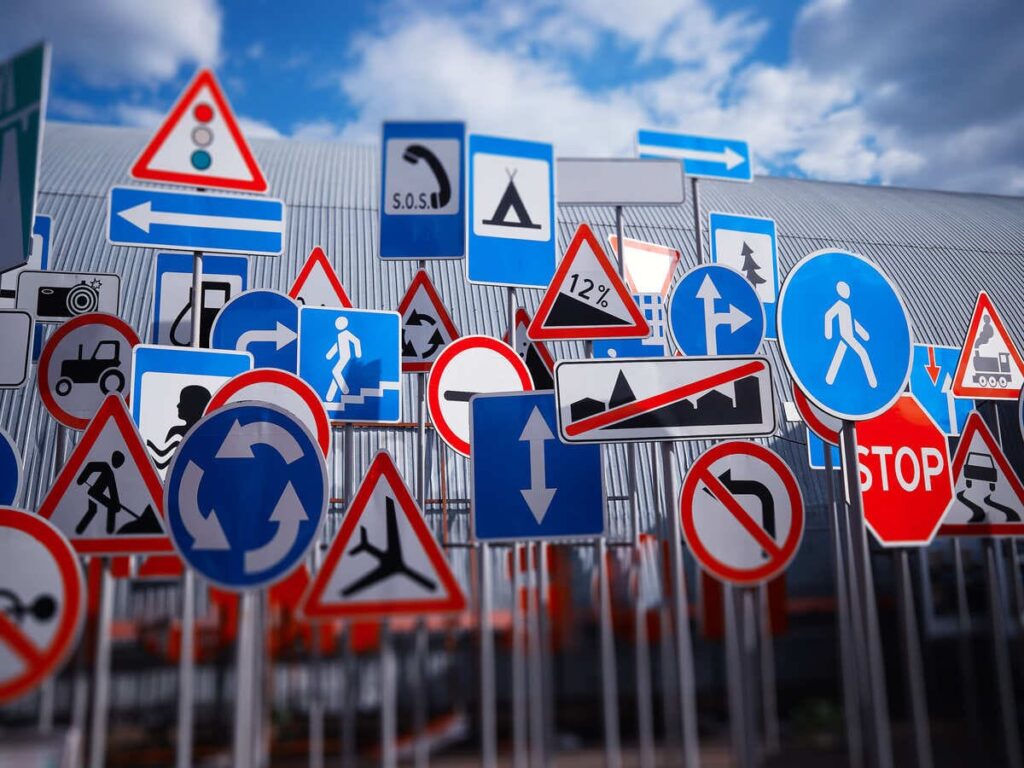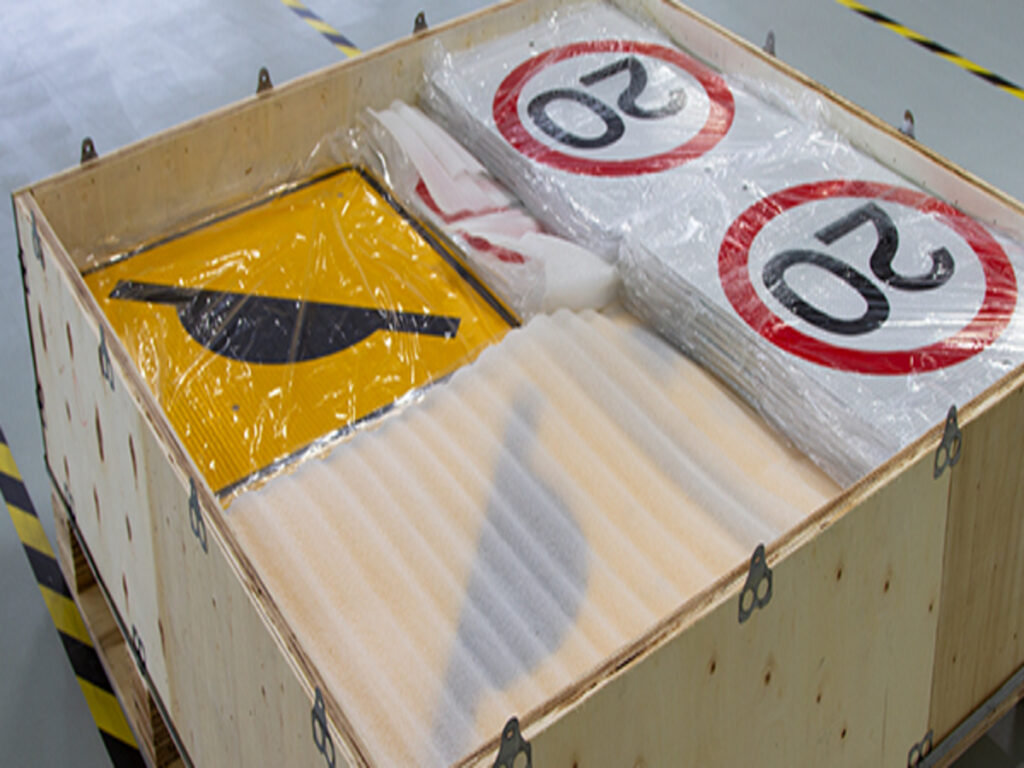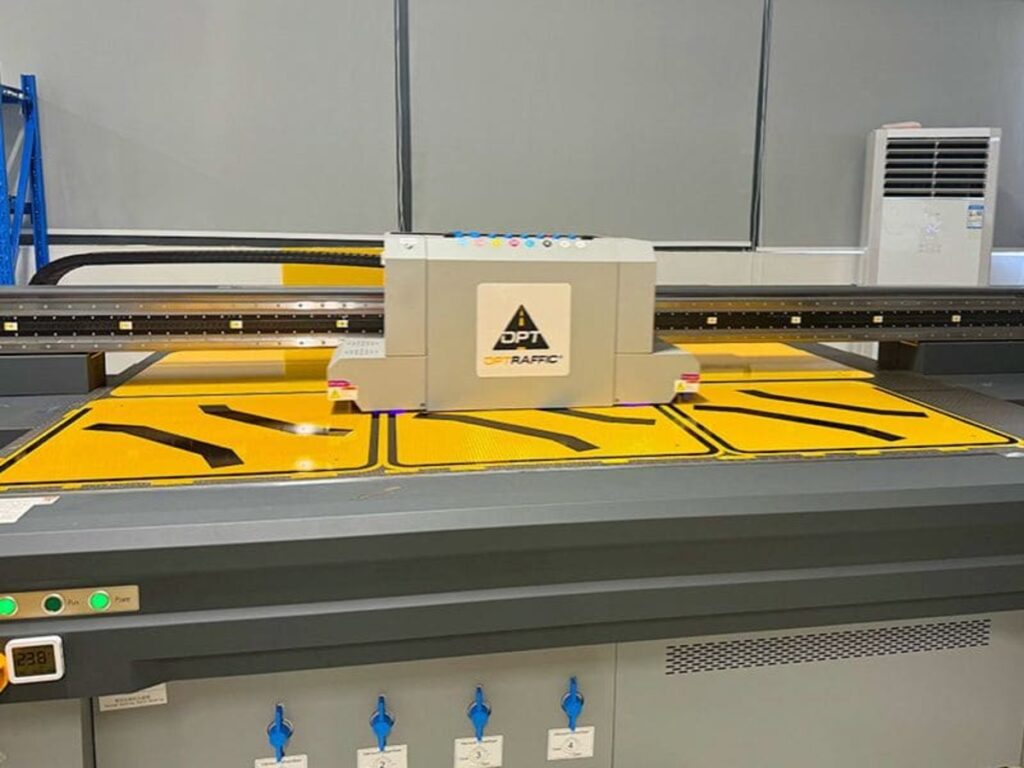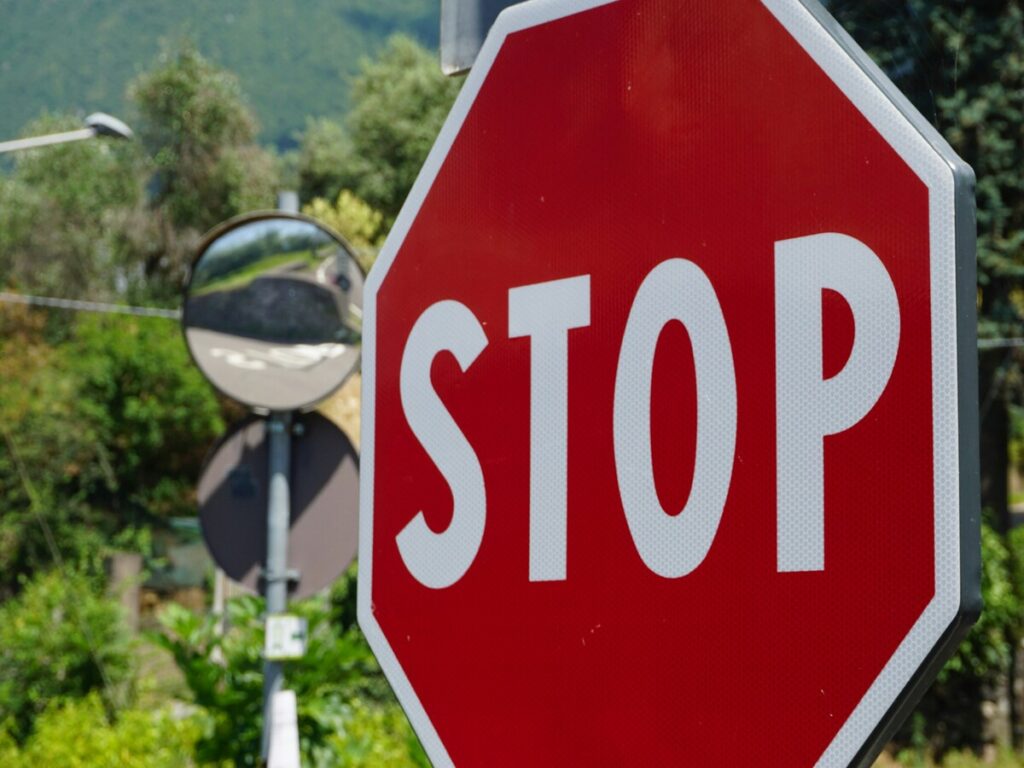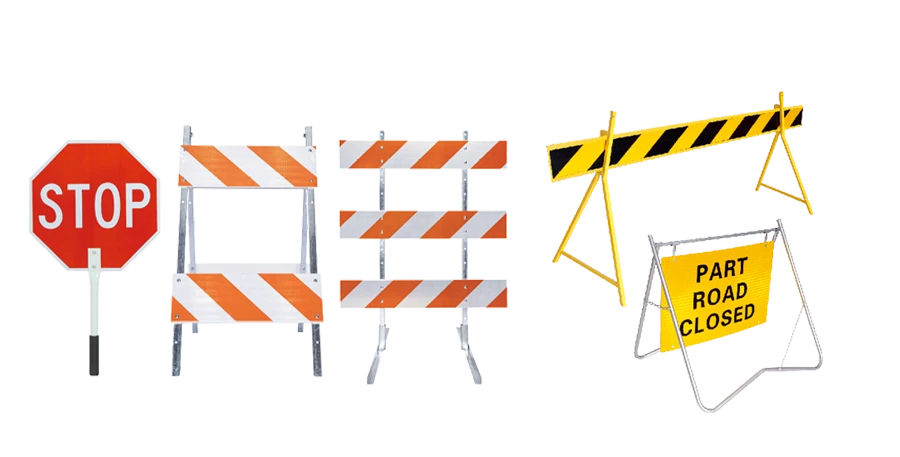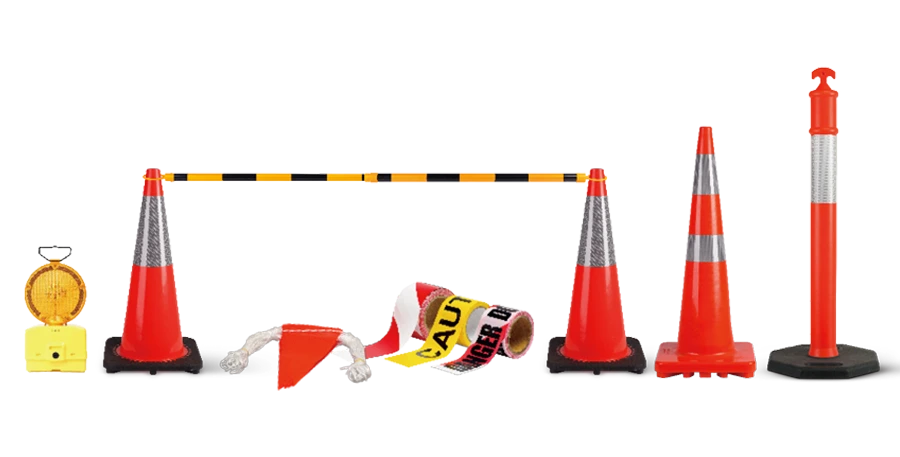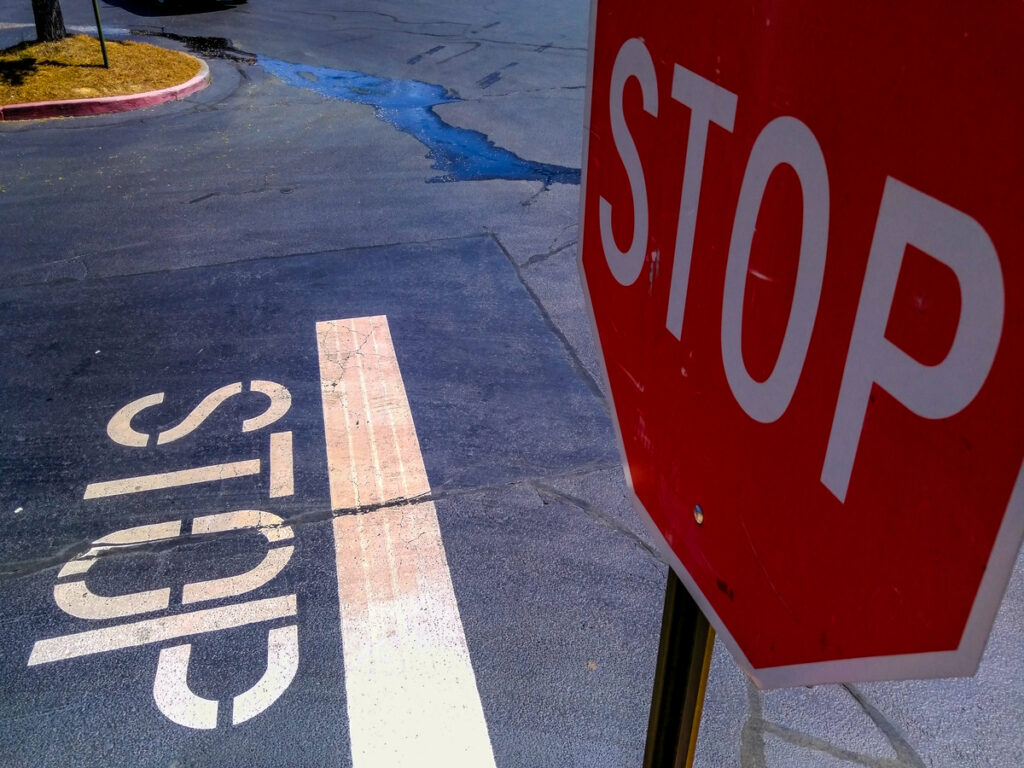
ऑस्ट्रेलियाई कानून के लिए सख्त नियम हैं रोकने का चिन्ह आकार, आकार, और चमक. जैसे मानकों 1742, जैसा 1743, और के रूप में/nzs 1906.1 इन आवश्यकताओं को नियंत्रित करें. इन मानकों का पालन करने से सड़क सुरक्षा बनाए रखने में मदद मिलती है और यातायात कानूनों को लागू करने में पुलिस की सहायता करता है. गैर-अनुपालन संकेत जुर्माना प्रदान कर सकते हैं और दुर्घटनाओं के जोखिम को बढ़ा सकते हैं. अनुसंधान इंगित करता है कि बड़े और अधिक चिंतनशील स्टॉप संकेत दुर्घटनाओं को कम कर सकते हैं 25%.
| मीट्रिक | सांख्यिकीय | विवरण |
|---|---|---|
| उज्ज्वल और स्पष्ट स्टॉप संकेतों के कारण ऑस्ट्रेलिया में क्रैश कमी | 25% कम दुर्घटना | बेहतर सुरक्षा और यातायात नियमों के अनुपालन का प्रदर्शन करता है |
| कुछ क्षेत्रों में बेहतर परावर्तन से क्रैश कमी | 38% बूँद | हाइलाइट्स जो साइन परावर्तन को बढ़ाते हैं, सुरक्षित ड्राइविंग व्यवहार को प्रोत्साहित करते हैं |
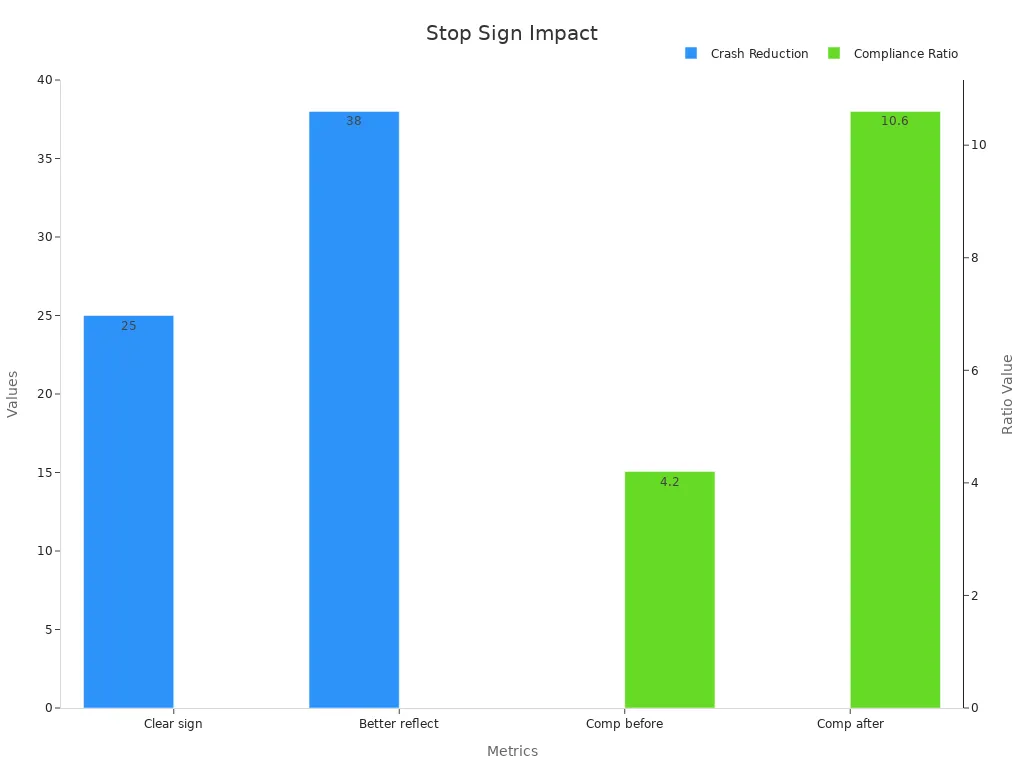
आकार की आवश्यकताओं को समझना आज्ञाकारी रहने का एक महत्वपूर्ण हिस्सा है. ट्रैफ़िक साइन आयामों को कैसे परिभाषित किया जाता है और ऑस्ट्रेलिया में लागू किया जाता है, इसके विस्तृत अवलोकन के लिए, हमारे ब्लॉग पढ़ें: ऑस्ट्रेलिया में ट्रैफिक साइन साइज़ स्टैंडर्ड्स: एक पूर्ण गाइड
कानूनी स्थिति और मानक
नियामक ढांचा
ऑस्ट्रेलियाई सड़क अधिकारियों के पास स्टॉप साइन साइज़ के लिए स्पष्ट नियम हैं. The ऑस्ट्रेलियाई मानक के रूप में 1742 समान यातायात नियंत्रण उपकरणों का मैनुअल ये नियम देता है. क्वींसलैंड और अन्य राज्य इस मानक का उपयोग करते हैं. सार्वजनिक सड़कों पर हर स्टॉप साइन का पालन करना चाहिए 1742. मानक का कहना है कि सड़क प्रकार और गति सीमा के साथ स्टॉप साइन साइज बदलें. ड्राइवरों को देखने और पढ़ने के लिए संकेत काफी बड़े होने चाहिए.
टिप्पणी: केवल अष्टकोणीय स्टॉप संकेत एक लाल पृष्ठभूमि और सफेद अक्षरों के साथ ऑस्ट्रेलिया में अनुमति है. कोई अन्य आकार या रंग कानूनी नहीं है.
अन्य देशों में ऐसे समूह भी हैं जो ट्रैफ़िक साइन नियमों को निर्धारित करते हैं और जांचते हैं:
- संघीय राजमार्ग प्रशासन (एफएचडब्ल्यूए) संयुक्त राज्य अमेरिका में यूनिफ़ॉर्म ट्रैफिक कंट्रोल डिवाइस पर मैनुअल लिखते हैं (MUTCD).
- अमेरिका में राज्यों और स्थानीय परिषदों को सुनिश्चित करें कि उनके संकेत MUTCD का पालन करते हैं. यदि वे संघीय नियमों को नहीं तोड़ते हैं तो वे छोटे बदलाव कर सकते हैं.
- यूरोपीय संघ में, सड़क संकेतों और संकेतों पर वियना सम्मेलन और अन्य नियम गाइड साइन मानकों. गतिशीलता और परिवहन के लिए यूरोपीय आयोग का महानिदेशक प्रत्येक देश में नियमों को रखने में मदद करता है.
- मेक्सिको में, संचार और परिवहन मंत्रालय (संप्रदाय) यातायात संकेतों का प्रबंधन करता है.
- कई देशों में पुलिस और ट्रैफिक कैमरे जांचते हैं कि क्या ड्राइवर संकेतों को रोकते हैं और यदि वे नहीं करते हैं तो जुर्माना देते हैं.
ऑस्ट्रेलियाई मानक सुरक्षा पर ध्यान केंद्रित करते हैं और देखने के लिए संकेतों को आसान बनाते हैं. नियम सुनिश्चित करते हैं. यह ड्राइवरों को नोटिस करने और संकेतों को समझने में मदद करता है. यह भ्रम और दुर्घटनाओं को भी कम करता है.
प्रवर्तनीयता
प्रवर्तनीयता का मतलब है कि कानून स्टॉप साइन्स का उपयोग करके समर्थन करता है. यदि कोई स्टॉप साइन नियमों को पूरा नहीं करता है, पुलिस जुर्माना देने में सक्षम नहीं हो सकती है. यदि संकेत बहुत छोटा है या चिंतनशील नहीं है, तो अदालतें दंड का समर्थन नहीं कर सकती हैं. यह मानक को बहुत महत्वपूर्ण बनाता है.
शोधकर्ताओं ने अध्ययन किया कि ड्राइवर स्टॉप साइन रूल्स का पालन कैसे करते हैं. उन्होंने ओवर से डेटा का उपयोग किया 1,100 ड्राइवरों. उन्होंने निगरानी प्रणालियों के साथ जानकारी एकत्र की, GPS, और वीडियो. परिणाम बताते हैं कि ड्राइवर अक्सर बंद नहीं होते हैं, खासकर जब कोई अन्य कारें नहीं हैं. उदाहरण के लिए:
| मीट्रिक/शर्त | मूल्य/परिणाम | व्याख्या/निहितार्थ |
|---|---|---|
| महत्व स्तर (अल्फा) | 0.05 | सांख्यिकीय महत्व के लिए मानक सीमा |
| अनुपालन जब सामने कोई यातायात नहीं | 16.8% रोक दिया (n = 369) | आधारभूत अनुपालन दर |
| अनुपालन जब सामने यातायात बंद नहीं हुआ | 11% रोक दिया (एन = 535), पी = 0.012, Φ = 0.083 | कम अनुपालन जब कार आगे नहीं रुकती है |
| अनुपालन जब सामने यातायात बंद हो गया | 19.3% रोक दिया, पी = 0.720, Φ = 0.033 | जब कार आगे रुकती है तो कोई महत्वपूर्ण वृद्धि नहीं होती |
| ऐतिहासिक अनुपालन दर (विभिन्न अध्ययन) | से रेंज 5% को 76% शर्तों पर निर्भर करता है | परस्पर विरोधी यातायात के बिना परिवर्तनशीलता और आम तौर पर कम अनुपालन दिखाता है |
| हमें रोकें साइन क्रैश में 2011 | 673,000 क्रैश; 2433 घातक परिणाम; 208,000 चोट लगने की घटनाएं | प्रवर्तन महत्व और गैर-अनुपालन के परिणाम पर प्रकाश डाला गया |
ये नंबरों से पता चलता है कि उचित स्टॉप साइन साइज़ और नियम क्यों महत्वपूर्ण हैं. जब संकेत कानून को देखना और पालन करना आसान है, ड्राइवरों को रोकने की अधिक संभावना है. यह सड़कों को सुरक्षित बनाता है और पुलिस को अपना काम करने में मदद करता है.
साइन साइज़ बंद करो: ऑस्ट्रेलियाई नियम
न्यूनतम आयाम
ऑस्ट्रेलियाई मानकों ने स्टॉप साइन साइज के लिए स्पष्ट नियम निर्धारित किए. मुख्य मानकों के रूप में हैं 1742, जैसा 1743, और के रूप में/nzs 1906.1. ये नियम सड़कों को सुरक्षित रखने में मदद करते हैं और देखने में आसान संकेत देते हैं. हर स्टॉप साइन में एक अष्टकोणीय आकार होना चाहिए. पृष्ठभूमि लाल होना चाहिए, और शब्द “रुकना” सफेद अक्षरों में दिखाई देना चाहिए. केवल यह डिजाइन ऑस्ट्रेलियाई सड़कों पर कानूनी है.
स्टॉप साइन का आकार इस बात पर निर्भर करता है कि इसे कहां रखा गया है. बड़े संकेत ड्राइवरों को दूर से उन्हें देखने में मदद करते हैं, विशेष रूप से तेज या व्यस्त सड़कों पर. नीचे दी गई तालिका स्टॉप साइन साइज़ और प्लेसमेंट के लिए मुख्य आवश्यकताओं को दर्शाती है:
| पहलू | ऑस्ट्रेलिया विवरण | नोट्स/तुलना |
|---|---|---|
| आकार | अष्टकोन | यूके और यूएस के समान |
| रंग | सफेद पाठ के साथ लाल पृष्ठभूमि | दृश्यता के लिए मानक |
| आकार भिन्नताएँ | 750 मिमी, 900 मिमी, या 1200 मिमी | यूके के मानकों से मेल खाता है |
| नियुक्ति ऊंचाई | शहरी: न्यूनतम 2.1 एम-eters; ग्रामीण: न्यूनतम 1.5 एम-eters | दृश्यता और अनुपालन सुनिश्चित करता है |
| परावर्तन | कक्षा 1 या वर्ग 3 चिंतनशील ग्रेड (के रूप में/nzs 1906) | रात की दृश्यता के लिए |
साइन साइज़ स्टॉप स्टॉप कभी भी कम नहीं होना चाहिए 750 किसी भी सार्वजनिक सड़क पर एमएम. एक के साथ संकेत 900 मिमी या 1200 ग्रामीण या उच्च गति वाली सड़कों पर मिमी चेहरा आम है. छोटे संकेत, जैसे कि 600 मिमी, केवल निजी संपत्ति या आंतरिक ड्राइववे पर अनुमति दी जाती है, सार्वजनिक सड़कों का सामना नहीं करना. चिंतनशील सामग्री को कक्षा को पूरा करना चाहिए 1 या वर्ग 3 मानकों. इससे ड्राइवरों को रात में या खराब मौसम में साइन देखने में मदद मिलती है.
टिप्पणी: परिषदों और सड़क प्रबंधकों को कानूनी समस्याओं से बचने और सड़कों को सुरक्षित रखने के लिए हमेशा सही स्टॉप साइन आकार का उपयोग करना चाहिए.
माप पद्धति
एक स्टॉप साइन का आकार अष्टकोना के फ्लैटों में मापा जाता है, बिंदु से बिंदु या ऊंचाई से नहीं. यह विधि संकेत के चेहरे का एक सही माप देती है. उदाहरण के लिए, ए 750 मिमी स्टॉप साइन का मतलब है कि एक सपाट पक्ष से विपरीत सपाट पक्ष की दूरी है 750 मिमी. यह नियम सभी को एक ही विधि का उपयोग करने में मदद करता है और सभी संकेतों को समान आकार रखता है.
स्टॉप साइन के आकार की जांच करने के लिए:
- सीधे एक दूसरे से दो फ्लैट पक्षों को खोजें.
- इन पक्षों के बीच की दूरी को मापने के लिए एक टेप उपाय का उपयोग करें.
- सुनिश्चित करें कि माप सड़क प्रकार के लिए आवश्यक आकार से मेल खाता है.
इन नियमों को पूरा नहीं करने वाले संकेत कानूनी नहीं हो सकते हैं. पुलिस और अदालतें दंड लागू नहीं कर सकती हैं यदि संकेत बहुत छोटा है या गलत आकार है. सही माप विधि का उपयोग करना सुनिश्चित करता है कि हर स्टॉप साइन कानून से मिलता है.
बख्शीश: इसे स्थापित करने से पहले हमेशा साइन के आकार की जाँच करें. यह सरल कदम महंगी गलतियों को रोक सकता है और ड्राइवरों को सुरक्षित रख सकता है.
सड़क प्रकार से आकार
शहरी और स्थानीय सड़कें
शहरी और स्थानीय सड़कों में अक्सर कम गति सीमा और अधिक लगातार चौराहे होते हैं. ऑस्ट्रेलियाई मानकों के लिए न्यूनतम स्टॉप साइन आकार की आवश्यकता होती है 750 इन सड़कों के लिए फ्लैट्स के पार मिमी. यह आकार ड्राइवरों को स्पष्ट रूप से संकेत देखने में मदद करता है, व्यस्त शहर के वातावरण में भी. काउंसिल सभी संकेतों को सुसंगत रखने के लिए इस मानक का उपयोग करते हैं. अधिकांश ड्राइवरों को कस्बों और उपनगरों में चौराहों पर इस आकार को देखने की उम्मीद है.
टिप्पणी: परिषदों को कभी भी सार्वजनिक सड़कों पर छोटे संकेतों का उपयोग नहीं करना चाहिए, भले ही यातायात हल्का हो.
ग्रामीण और उच्च गति वाली सड़कें
ग्रामीण और उच्च गति वाली सड़कें अलग-अलग चुनौतियां पेश करती हैं. वाहन तेजी से यात्रा करते हैं, और दृष्टि दूरियां लंबी हैं. अनुशंसित स्टॉप साइन आकार तक बढ़ जाता है 900 ग्रामीण सील सड़कों के लिए मिमी. ऊपर की गति वाले राजमार्गों या सड़कों पर 100 किमी/घंटा, मानक आकार तक बढ़ जाता है 1200 मिमी. ये बड़े संकेत ड्राइवरों को प्रतिक्रिया करने और सुरक्षित रूप से रुकने के लिए अधिक समय देते हैं.
| सड़क प्रकार | मानक स्टॉप साइन आकार |
|---|---|
| ग्रामीण सील सड़क | 900 मिमी |
| राजमार्ग/हाई-स्पीड रोड | 1200 मिमी |
बड़े स्टॉप साइन आकार खुले क्षेत्रों में दृश्यता में सुधार करते हैं और छूटे हुए स्टॉप को रोकने में मदद करते हैं.
निजी और आंतरिक उपयोग
निजी सड़कें, कार पार्क करना, और औद्योगिक साइटें छोटे स्टॉप संकेतों का उपयोग कर सकती हैं. इन स्थानों के लिए अनुमत न्यूनतम आकार है 600 मिमी. इन संकेतों को सार्वजनिक सड़कों का सामना नहीं करना चाहिए. निजी क्षेत्रों में छोटे संकेतों का उपयोग करने से सार्वजनिक सड़कों पर ड्राइवरों के लिए भ्रम को कम करने में मदद मिलती है.
- 600 मिमी: केवल आंतरिक या निजी उपयोग के लिए
- 750 मिमी और ऊपर: किसी भी चिन्ह के लिए एक सार्वजनिक सड़क का सामना करना पड़ रहा है
बख्शीश: स्टॉप साइन आकार चुनने से पहले हमेशा सड़क के प्रकार की जांच करें. यह अनुपालन और सुरक्षा सुनिश्चित करता है.
स्टॉप साइन साइज़ चुनना
सार्वजनिक सड़कें
सही स्टॉप साइन का आकार चुनना बहुत महत्वपूर्ण है. यह लोगों को सुरक्षित रखता है और कानून का अनुसरण करता है. अधिकांश शहर और स्थानीय सड़कों पर, संकेत कम से कम होना चाहिए 750 मिमी चौड़ा. बड़े संकेत, पसंद 900 मिमी या 1200 मिमी, देश या तेज सड़कों पर उपयोग किया जाता है. आयोवा स्टेट यूनिवर्सिटी और MUTCD शो बड़े संकेतों से अध्ययन देखना आसान है. यह क्रैश को रोकने में मदद करता है क्योंकि ड्राइवर साइन को बेहतर तरीके से हाजिर कर सकते हैं. MUTCD ने पाया कि बड़े स्टॉप संकेतों ने दुर्घटनाओं को काट दिया 19% कुछ चौराहों पर. देखने के लिए संकेतों को आसान बनाने से सभी को मदद मिलती है, विशेष रूप से पुराने ड्राइवर. यह भी सड़कों को सुरक्षित बनाने का एक सस्ता तरीका है.
बख्शीश: हमेशा एक स्टॉप साइन आकार चुनें जो सड़क और गति को फिट करता है. यह ड्राइवरों को साइन को देखने और मानने में मदद करता है.
कार्य क्षेत्र
काम क्षेत्र ड्राइवरों के लिए संकेतों को देखने के लिए कठिन बना सकते हैं. अस्थायी स्टॉप संकेत यहां पढ़ने में बड़े और आसान होने चाहिए. एक कैलट्रान अध्ययन से पता चला है कि बड़े अक्षर और शब्द ड्राइवरों को तेजी से संकेत पढ़ने में मदद करते हैं. संकेतों पर बड़े शब्दों को दूर से देखा जा सकता है. इससे ड्राइवरों को रोकने के लिए अधिक समय मिलता है. पोर्टेबल वर्क ज़ोन स्टॉप साइन्स के लिए सबसे बड़ा आकार है 48 इंच से 48 इंच. उज्ज्वल लाल पृष्ठभूमि या चमकती रोशनी संकेतों को देखने में आसान हो जाती है. टेक्सास में परीक्षणों से पता चला कि ये उज्ज्वल संकेत अधिक कारों को पूरी तरह से रोकने में मदद करते हैं.
- सबसे बड़े संकेत का उपयोग करें जो आप कार्य क्षेत्रों में कर सकते हैं.
- बेहतर दृश्यता के लिए माइक्रोप्रिस्मैटिक या एलईडी स्टॉप साइन्स का प्रयास करें.
निजी संपत्ति
जो लोग निजी संपत्ति के मालिक हैं, वे अपने स्टॉप साइन आकार का चयन कर सकते हैं. लेकिन सार्वजनिक सड़कों के समान आकार का उपयोग करना सबसे अच्छा है. मानक संकेतों का उपयोग करने से ड्राइवरों को पता है कि क्या करना है. यह भ्रम को कम करता है और दुर्घटनाओं को रोकता है. स्थानीय दुकानें अक्सर ऐसे संकेत बेचती हैं जो आकार और चमक के लिए सही नियमों को पूरा करते हैं. इन नियमों का पालन करने से बीमा में मदद मिलती है, कानून, और सुरक्षा. नियम जो नियमों का पालन नहीं करते हैं, वे ड्राइवरों को भ्रमित कर सकते हैं और दुर्घटनाओं का कारण बन सकते हैं. निजी भूमि पर सार्वजनिक सड़क संकेत के आकार का उपयोग करना चीजों को स्पष्ट और सुरक्षित रखता है.
यह देखने के लिए कि अलग -अलग देश साइन डिज़ाइन को कैसे रोकते हैं - और हर जगह सड़क उपयोगकर्ताओं के लिए स्थिरता क्यों मायने रखता है - हमारे ब्लॉग का पता लगाएं: विभिन्न प्रकार के स्टॉप संकेतों की खोज: वैश्विक विविधताओं और यातायात सुरक्षा में उनकी भूमिका को समझना.
गति क्षेत्र और दृश्यता
गति-आधारित आकार
गति सीमा एक स्टॉप साइन के लिए सही आकार तय करने में एक महत्वपूर्ण भूमिका निभाती है. उच्च गति सीमा वाले सड़कों को बड़े संकेतों की आवश्यकता होती है. ड्राइवर तेजी से यात्रा करते हैं और संकेतों को देखने और प्रतिक्रिया करने के लिए अधिक समय की आवश्यकता होती है. ऑस्ट्रेलियाई मानक के रूप में 1742.2 इस पर स्पष्ट मार्गदर्शन देता है.
| गति क्षेत्र | अनुशंसित स्टॉप साइन आकार |
|---|---|
| तक 60 किमी/घंटा | 750 मिमी |
| 80-100 किमी/घंटा | 900 मिमी |
| ऊपर 100 किमी/घंटा | 1200 मिमी |
ए 750 मिमी साइन शहर की सड़कों और स्थानीय सड़कों में अच्छी तरह से काम करता है. ग्रामीण सड़कों या राजमार्गों पर, ए 900 मिमी या 1200 एमएम साइन बेहतर दृश्यता देता है. बड़े संकेत ड्राइवरों को अधिक दूरी से स्टॉप साइन को स्पॉट करने में मदद करते हैं. यह मिस्ड स्टॉप और दुर्घटनाओं के जोखिम को कम करता है.
बख्शीश: हमेशा सड़क की गति सीमा से साइन आकार से मेल खाते हैं. बड़े संकेत तेज सड़कों पर जान बचाते हैं.
दृश्यता दूरी
दृश्यता दूरी का मतलब है कि एक ड्राइवर एक स्टॉप साइन को देख और पढ़ सकता है. अच्छी दृश्यता ड्राइवरों को धीमा करने और सुरक्षित रूप से रुकने के लिए पर्याप्त समय देती है. मानक बताता है कि ड्राइवरों को कम से कम एक स्टॉप साइन देखना चाहिए 100 यात्रा करते समय मीटर दूर 100 किमी/घंटा.
कई कारक दृश्यता को प्रभावित करते हैं:
- साइन आकार
- चिंतनशील सामग्री
- बढ़ती हुई ऊँचाई
- पेड़ों या खड़ी कारों की तरह रुकावट
क्लास के साथ एक संकेत 1 चिंतनशील चादर रात में चमकती है. उचित बढ़ते ऊंचाई, आम तौर पर 1.5 को 2.1 एम-eters, ड्राइवर की दृष्टि की रेखा में चिन्ह रखता है. सड़क प्रबंधकों को किसी भी चीज़ की जांच करनी चाहिए जो संकेत के दृश्य को अवरुद्ध करती है.
टिप्पणी: नियमित चेक मदद करने वाले और प्रभावी संकेतों को रोकने में मदद करते हैं. स्पष्ट दृष्टि लाइनें और सही साइन आकार सभी के लिए सड़कें सुरक्षित बनाते हैं.
बढ़ते और प्लेसमेंट
ऊंचाई और निकासी
स्टॉप साइन्स सभी को देखने के लिए पर्याप्त होना चाहिए. ग्रामीण इलाकों में, स्टॉप साइन के नीचे कम से कम होना चाहिए 1.5 जमीन के ऊपर मीटर. कस्बों या शहरों में, संकेत अधिक होना चाहिए, कम से कम 2.1 जमीन से मीटर. यह अतिरिक्त ऊंचाई पार्क की गई कारों या लोगों के ऊपर से चिन्ह रखने में मदद करती है.
यहां स्टॉप साइन माउंटिंग के लिए सामान्य नियमों के साथ एक तालिका है:
| माप पहलू | आवश्यकता/मानक |
|---|---|
| न्यूनतम बढ़ती ऊंचाई (ग्रामीण) | 1.5 साइन के नीचे से जमीन तक मीटर |
| न्यूनतम बढ़ती ऊंचाई (शहरी) | 2.1 साइन के नीचे से जमीन तक मीटर |
| बड़े संकेत (>4.5 वर्ग मीटर) | 2.1 साइन के नीचे जमीन से नीचे तक मीटर निकासी |
| ओवरहेड साइन वर्टिकल क्लीयरेंस | 5.2 सड़क और कंधों की पूरी चौड़ाई पर मीटर |
| पोस्ट-माउंटेड संकेतों के लिए पार्श्व ऑफसेट | कम से कम 600 अंकुश या फुटपाथ के किनारे से मिमी |
यह सुनिश्चित करने के संकेत उच्च हैं काफी अधिक हैं, यहां तक कि बड़े ट्रकों में भी, उन्हें देखो. सही निकासी लोगों और बाइक के रास्ते से साइन को भी बाहर रखता है. सड़क श्रमिकों को हमेशा यह जांचना चाहिए कि संकेत बहुत कम या सड़क के करीब नहीं है.
बख्शीश: यदि कोई चिन्ह बहुत कम है, यह कारों या लंबी घास द्वारा छिपाया जा सकता है. एक संकेत लगाने से पहले हमेशा मापें.
अवरोधों
पेड़ों या खड़ी कारों जैसी चीजें स्टॉप साइन को ब्लॉक कर सकती हैं. बाड़, बस स्टॉप, या यहां तक कि लैंप पोस्ट भी साइन को छिपा सकते हैं. इन समस्याओं को खोजने के लिए सड़क श्रमिकों को अक्सर चौराहों पर गौर करने की आवश्यकता होती है.
कुछ सामान्य चीजें जो ब्लॉक संकेत हैं:
- झाड़ियों या पेड़ की शाखाएं जो बहुत अधिक हो गई हैं
- ट्रक या वैन साइन के पास खड़ी हैं
- दुकानों या बस स्टॉप के लिए संकेत
- दीपक पोस्ट या पावर पोल
पीछे के पौधों को काटने से संकेतों को देखने में आसान रखने में मदद मिलती है. यदि एक चिन्ह बहुत अवरुद्ध है, इसे स्थानांतरित करना या इसे उच्च बनाने से मदद मिल सकती है. कभी-कभी, एक बड़े संकेत का उपयोग करने से हाजिर करना आसान हो जाता है. संकेतों की जाँच अक्सर उन्हें अच्छी तरह से काम करती है और सभी मौसम में देखने में आसान है.
टिप्पणी: स्टॉप संकेतों को स्पष्ट रखने से जीवन बचता है. समस्याओं की जाँच करना और ठीक करना जल्दी से सड़कों को सुरक्षित रखता है.
परावर्तन और सामग्री
चिंतनशील वर्ग
ऑस्ट्रेलियाई मानकों को उच्च गुणवत्ता वाले चिंतनशील सामग्री का उपयोग करने के लिए स्टॉप संकेतों की आवश्यकता होती है. ये सामग्रियां ड्राइवरों को रात या खराब मौसम में संकेत देखने में मदद करती हैं. परावर्तकता के लिए मुख्य मानक/NZS है 1906.1. यह मानक चिंतनशील शीटिंग के विभिन्न वर्गों को सूचीबद्ध करता है.
| चिंतनशील वर्ग | विवरण | स्टॉप साइन्स पर उपयोग करें |
|---|---|---|
| कक्षा 1 | उच्च तीव्रता वाले प्रिज्मीय या ग्लास बीड | सार्वजनिक सड़कों के लिए अनिवार्य |
| कक्षा 1w | वर्थ-एंगल प्रिज्मेटिक | अतिरिक्त चमक के लिए उपयोग किया जाता है |
| कक्षा 2 | कम परावर्तन | स्टॉप साइन्स के लिए अनुमति नहीं है |
कक्षा 1 और क्लास 1 डब्ल्यू शीटिंग चमकती है जब हेडलाइट्स ने उन्हें मारा. ये कक्षाएं दूर से देखने के लिए स्टॉप संकेतों को आसान बनाती हैं. कक्षा 2 शीटिंग स्टॉप साइन्स के लिए मानक को पूरा नहीं करती है. परिषदों और सड़क प्रबंधकों को हमेशा कक्षा का चयन करना चाहिए 1 या किसी सार्वजनिक सड़क पर किसी भी स्टॉप साइन के लिए कक्षा 1W.
परावर्तकता वर्गों के बारे में अधिक जानना चाहते हैं और विभिन्न प्रकार के संकेतों के अनुपालन? हमारे ब्लॉग पढ़ें: ऑस्ट्रेलिया में चिंतनशील ट्रैफिक साइन्स शीटिंग स्टैंडर्ड्स का अवलोकन.
सामग्री मानकों
स्टॉप साइन्स को मजबूत और टिकाऊ का उपयोग करना चाहिए साइन मटेरियल. सबसे आम सामग्री एल्यूमीनियम है. एल्यूमीनियम जंग का विरोध करता है और कई वर्षों तक रहता है. कुछ संकेत स्टील का उपयोग करते हैं, लेकिन एल्यूमीनियम हल्का और स्थापित करने में आसान है.
स्टॉप साइन सामग्री के लिए प्रमुख बिंदु:
- साइन बेस के लिए एल्यूमीनियम या स्टील का उपयोग करें.
- क्लास लागू करें 1 या कक्षा 1W चिंतनशील शीटिंग.
- सुनिश्चित करें कि संकेत मिलता है 1743 और के रूप में/nzs 1906.1 मानकों.
संकेतों के लिए अपनी परावर्तकता रखना चाहिए 10 साल. अच्छी सामग्री साइन को उज्ज्वल और स्पष्ट रहने में मदद करती है. काउंसिल को अक्सर संकेतों की जांच करनी चाहिए और किसी भी तरह से फीका या क्षतिग्रस्त होना चाहिए.
राज्य उदाहरण
एनएसडब्ल्यू
न्यू साउथ वेल्स स्टॉप साइन साइज के लिए सख्त नियमों का पालन करता है. सड़कें और समुद्री सेवाएं (आरएमएस) न्यूनतम आकार सेट करता है 750 शहरी सड़कों के लिए मिमी. ग्रामीण सड़कों की आवश्यकता है 900 एमएम साइन. उच्च गति वाले राजमार्ग अक्सर उपयोग करते हैं 1200 बेहतर दृश्यता के लिए एमएम संकेत. आरएमएस फील्ड ऑडिट में पाया गया है कि कुछ पुराने चौराहों में अभी भी छोटे संकेत हैं. वर्तमान मानकों को पूरा करने के लिए परिषदों को इन संकेतों को बदलना होगा. आरएमएस यह भी जांचता है कि सभी संकेत वर्ग का उपयोग करते हैं 1 चिंतनशील चादर. इन नियमों को पूरा नहीं करने वाले संकेत अप्राप्य दंड का कारण बन सकते हैं.
टिप्पणी: आरएमएस नियमित निरीक्षण की सिफारिश करता है ताकि यह सुनिश्चित हो सके कि सभी स्टॉप संकेत दिखाई और आज्ञाकारी बने रहें.
| सड़क प्रकार | न्यूनतम स्टॉप साइन आकार |
|---|---|
| शहरी | 750 मिमी |
| ग्रामीण | 900 मिमी |
| उच्च गति/राजमार्ग | 1200 मिमी |
QLD
क्वींसलैंड परिवहन और मुख्य सड़कें (टीएमआर) समान नियमों का उपयोग करता है. सार्वजनिक सड़कों पर न्यूनतम स्टॉप साइन का आकार है 750 मिमी. क्षेत्रीय और मुख्य सड़कों की आवश्यकता है 900 एमएम संकेत. TMR फील्ड चेक में पाया गया है कि फीका या अंडरस्काइज्ड संकेत अक्सर दूरदराज के क्षेत्रों में दिखाई देते हैं. टीएमआर परिषदों को जल्द से जल्द इन संकेतों को अपग्रेड करने का निर्देश देता है और इसके लिए भी क्लास की आवश्यकता होती है 1 या सभी स्टॉप संकेतों के लिए कक्षा 1W चिंतनशील शीटिंग.
- 750 मिमी: शहरी और स्थानीय सड़कें
- 900 मिमी: क्षेत्रीय और मुख्य सड़कें
- 1200 मिमी: उच्च गति या खराब दृश्यता स्थान
बख्शीश: TMR लंबी दृष्टि दूरी या लगातार कोहरे के साथ चौराहों पर बड़े संकेतों का उपयोग करने का सुझाव देता है.
विक
विक्टोरिया का विकरोड स्टॉप साइन साइज के लिए स्पष्ट नियम सेट करता है. सार्वजनिक सड़कों के लिए डिफ़ॉल्ट आकार है 750 मिमी. केवल निजी या आंतरिक सड़कें ही उपयोग कर सकती हैं 600 एमएम संकेत. ग्रामीण चौराहे अक्सर उपयोग करते हैं 900 एमएम संकेत. विकरोड्स फील्ड ऑडिट से पता चला है कि गैर-अनुपालन संकेत भ्रम और कानूनी मुद्दों का कारण बन सकते हैं. परिषदों को यह जांचना होगा कि सभी संकेत सही आकार और परावर्तन को प्रदर्शित करते हैं.
| स्थान प्रकार | मानक स्टॉप साइन आकार |
|---|---|
| लोक -मार्ग | 750 मिमी |
| ग्रामीण प्रतिच्छेदन | 900 मिमी |
| निजी/आंतरिक उपयोग | 600 मिमी |
विक्टोरिया में परिषदों को किसी भी स्टॉप साइन को हटाना होगा जो मानक को पूरा नहीं करता है. यह सड़कों को सुरक्षित रखने में मदद करता है और यह सुनिश्चित करता है कि कानून लागू किया जा सके.
क्रय और अनुपालन
आपूर्तिकर्ता सत्यापन
Optraffic जैसे एक विश्वसनीय स्टॉप साइन सप्लायर का चयन अनुपालन और सुरक्षा के लिए महत्वपूर्ण है. आयातकों और परिषदों को मानकों के रूप में पूरा करने के लिए सख्त कदमों का पालन करें. वे प्रमाण पत्र की समीक्षा करते हैं, पिछली परियोजनाओं की जाँच करें, और संदर्भों का अनुरोध करें. प्रसव से पहले, निरीक्षक एक अनुपालन चेकलिस्ट का उपयोग करके परावर्तकता का परीक्षण करें और लेबल को सत्यापित करें.
आयातकों को मुख्य दस्तावेजों को रखना चाहिए जैसे कि अनुरूपता के प्रमाण पत्र, लैब टेस्ट रिपोर्ट, और सामग्री चश्मा. ऑस्ट्रेलियाई रीति -रिवाज शिपमेंट का निरीक्षण कर सकते हैं, लेबल, और कागजी कार्रवाई. गैर-अनुपालन संकेत देरी या याद कर सकते हैं.
हर स्टॉप साइन को निर्माता को दिखाने वाले एक स्पष्ट लेबल की आवश्यकता होती है, परावर्तन वर्ग (उदाहरण के लिए:. कक्षा 1w), कोड, और ट्रेसबिलिटी के लिए बैच नंबर. कुछ आयातक छेड़छाड़ को रोकने और आपूर्ति श्रृंखला अखंडता सुनिश्चित करने के लिए डिजिटल रिकॉर्ड या ब्लॉकचेन का उपयोग करते हैं.
बेहतर ढंग से समझने के लिए कि एक आज्ञाकारी और उच्च गुणवत्ता वाला स्टॉप साइन बनाने में क्या होता है, ऑप्ट्राफिक की उत्पादन सुविधा में पर्दे के पीछे एक नज़र डालें. हाल ही में लिंक्डइन पोस्ट, हमने साझा किया कि कैसे हमारे ट्रैफ़िक स्टॉप संकेत बनाए जाते हैं - परावर्तक शीटिंग और सामग्री चयन से लेकर गुणवत्ता जांच और पैकेजिंग तक. प्रत्यक्ष निर्माता के रूप में, हम सुनिश्चित करते हैं कि हर कदम ऑस्ट्रेलियाई मानकों को पूरा करता है और सार्वजनिक और निजी परियोजनाओं के लिए विश्वसनीय वितरण का समर्थन करता है. आप पूरी पोस्ट पढ़ सकते हैं यहाँ.
अनुपालन चिह्न
स्टॉप साइन्स पर अनुपालन चिह्न सुरक्षा के लिए बहुत महत्वपूर्ण हैं. ये चिह्न साबित करते हैं कि संकेत आकार के लिए ऑस्ट्रेलियाई नियमों को पूरा करता है, परावर्तन, और सामग्री. एक अध्ययन में पाया गया कि स्पष्ट चिह्नों, सड़क पर आगे के संकेतों की तरह, द्वारा कम दुर्घटनाएँ 15% चौराहों पर. इससे पता चलता है कि अच्छे अंकन क्यों मायने रखते हैं. जब चिह्नों को देखना आसान है, ड्राइवर नोटिस जल्द ही संकेत रोकते हैं. यह अधिक लोगों को रुकने में मदद करता है और इसका मतलब कम दुर्घटनाओं से होता है. काउंसिल को यह जांचना होगा कि हर स्टॉप साइन में सही कोड और लेबल हैं.
सामान्य नुकसान
काउंसिल और आयातकों को अक्सर स्टॉप साइन्स खरीदते या डालते समय समस्या होती है. कुछ सभी सही कागजात प्राप्त करना भूल जाते हैं, जैसे प्रमाण पत्र या परीक्षण परिणाम. यह शिपमेंट को धीमा कर सकता है या जुर्माना का कारण बन सकता है. ऐसे संकेत जो गलत आकार के हैं, पर्याप्त चिंतनशील नहीं, या लापता लेबल पर प्रतिबंध लगाया जा सकता है या वापस बुलाया जा सकता है. यदि कोई चिन्ह बहुत छोटा है या गलत जगह पर है, ड्राइवर इसे अच्छी तरह से नहीं देख सकते हैं. गलत चिंतनशील सामग्री का उपयोग करने से रात में देखने के लिए संकेत कठिन हो जाते हैं. स्किपिंग क्वालिटी चेक कानूनी परेशानी का कारण बन सकता है और सड़कों को असुरक्षित बना सकता है. नियमों का पालन नहीं करने का मतलब याद नहीं हो सकता है, जुर्माना, या संकेतों को आयात करने का अधिकार खोना.
टिप्पणी: काउंसिल को कर्मचारियों को प्रशिक्षित करना चाहिए और इन समस्याओं से बचने और सड़कों को सुरक्षित रखने के लिए विशेषज्ञ मदद करनी चाहिए.
सही स्टॉप साइन साइज और नियमों के बाद सड़कों को सुरक्षित रखा जाता है. यह भी सुनिश्चित करता है कि पुलिस जरूरत पड़ने पर जुर्माना दे सकती है. परिषदों और सड़क प्रबंधकों को अक्सर संकेतों की जांच करनी चाहिए. उन्हें विश्वसनीय कंपनियों से संकेत खरीदने चाहिए.
- उन संकेतों को रोकें जो सही आकार हैं और सही जगह पर देखना आसान है. ड्राइवर उन्हें जल्दी हाजिर कर सकते हैं और सुरक्षित रूप से रुक सकते हैं.
- मानक आकार और चमकदार सामग्रियों का उपयोग करने से रात में देखने के लिए संकेत आसान हो जाते हैं.
- स्पष्ट स्टॉप संकेत दुर्घटनाओं को रोकने और लोगों को सुरक्षित रखने में मदद करते हैं.
अगर एक स्टॉप साइन सेट करना मुश्किल है, स्थानीय अधिकारियों से मदद के लिए पूछें. यह सुनिश्चित करता है कि हर संकेत कानून का अनुसरण करता है और सभी को सुरक्षित रखता है.
अक्सर पूछे जाने वाले प्रश्न
ऑस्ट्रेलिया में एक स्टॉप रोड साइन का आकार क्या है?
ऑस्ट्रेलिया मै, सार्वजनिक सड़कों पर एक स्टॉप साइन के लिए मानक आकार आमतौर पर है 750 मिमी या 900 मिमी भर में, सड़क के माहौल पर निर्भर करता है. बड़े आकार, जैसे कि 1200 मिमी, दृश्यता में सुधार के लिए राजमार्गों या उच्च गति वाली सड़कों पर इस्तेमाल किया जा सकता है.
स्टॉप साइन के लिए न्यूनतम आकार क्या है?
ऑस्ट्रेलियाई मानक के तहत एक स्टॉप साइन के लिए न्यूनतम आकार जैसा 1742 है 750 मिमी, आमतौर पर कम गति वाले यातायात वाले स्थानीय सड़कों या क्षेत्रों पर लागू होता है. तथापि, परिषदों को ग्रामीण या उच्च जोखिम वाले क्षेत्रों में बड़े संकेतों की आवश्यकता हो सकती है.
क्या गेज एक स्टॉप साइन है?
स्टॉप साइन्स आमतौर पर उपयोग करके निर्मित होते हैं 1.6 मिमी को 2.0 मिमी एल्यूमीनियम शीट, स्थापना की शर्तों पर निर्भर करता है. हवा लोड क्षेत्रों के आधार पर मोटाई थोड़ी भिन्न हो सकती है, बढ़ते पद्धति, या स्थानीय प्राधिकारी आवश्यकताएं.
क्या कोई स्टॉप साइन किसी भी रंग या आकार का हो सकता है?
ऑस्ट्रेलियाई कानून केवल एक लाल पृष्ठभूमि और सफेद अक्षरों के साथ अष्टकोणीय स्टॉप संकेतों की अनुमति देता है. कोई अन्य रंग या आकार मानक को पूरा नहीं करता है और लागू करने योग्य नहीं है.
ग्रामीण सड़कें बड़े स्टॉप साइन्स का उपयोग क्यों करती हैं?
ग्रामीण सड़कों में अक्सर उच्च गति सीमा और लंबी दृष्टि दूरी होती है. बड़े स्टॉप साइन्स, जैसे कि 900 मिमी या 1200 मिमी, ड्राइवरों को आगे की ओर से साइन देखने में मदद करें और समय पर प्रतिक्रिया दें.
यदि कोई स्टॉप साइन ऑस्ट्रेलियाई मानकों को पूरा करता है तो कोई कैसे जांच सकता है?
संकेत के पीछे अनुपालन चिह्नों के लिए देखें. ये चिह्न आकार दिखाते हैं, परावर्तन वर्ग, और निर्माता. इन चिह्नों के बिना संकेत ऑस्ट्रेलियाई मानकों को पूरा नहीं कर सकते हैं.

